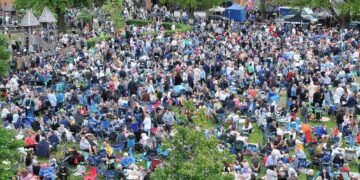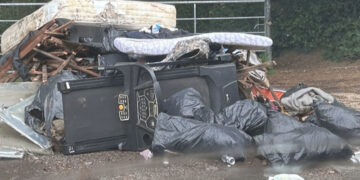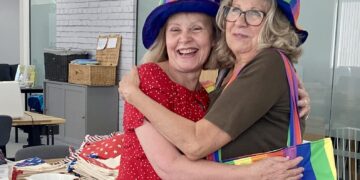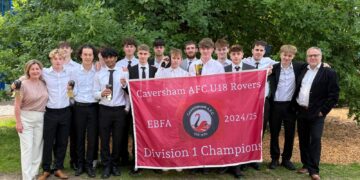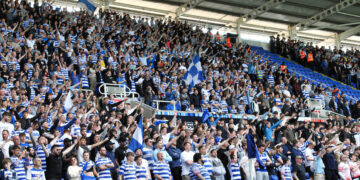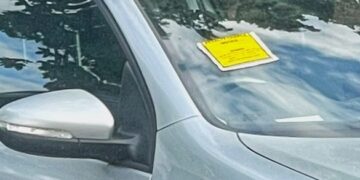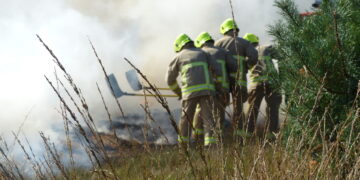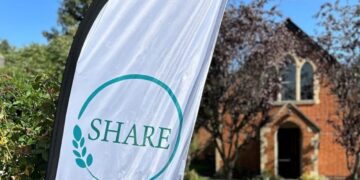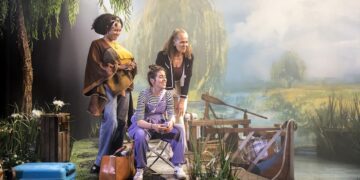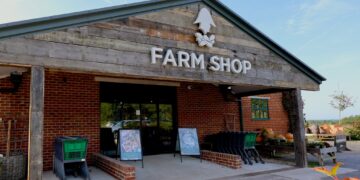A GUIDED Woodley walk opened members of Wargrave Local History Society’s eyes to the hidden treasures of the town.
Club secretary of Wargrave Local History Society Peter Delaney reports:
“Ann Smith, previously local studies specialist at Reading Library, and the editor of A History of Woodley gave members of the society her special insight into the various sites on a guided route,” he said.
“Starting at the relatively new Oakwood Centre, the first building of interest was only a short distance along Headley Road.
“Lone Pine Cottage is a Grade 2 listed building dating from the 18th century, and had been the home of the local wheelwright and undertaker, although now-a-days a physiotherapist occupies the building.”
A short distance beyond, via Reading Road to Farriers Close, the group came across Woodley’s forge.
“Although not formally listed, the cottage has the date 1785 inscribed into one of the beams, so is again at least of 18th century origin, whilst the former forge building in its grounds, now used as a music room, still retains many of the original features.
“Further along Reading Road, on the opposite side, Ann pointed out one of Woodley’s hidden treasures.
Bulmershe Manor was a classic E-shaped 16th century manor house, but much of it was demolished, so that only a square portion of it remains.
“The gateposts are topped by a pair of stone pineapples, which are also listed in their own right, and the house next door is also listed, dating from the 17th century,” he explained.

The group then walked back along Reading Road to Woodley shopping centre, passing a house where a war-time air raid shelter was recently discovered in the garden.
“The shopping precinct at Crockhamwell Road was developed in stages during the 1960s and 1970s,” he continued.
“The ancient thatched Chequers public house was replaced by a modern one as part of the redevelopment, which also entailed the removal of several council houses.
“The present parades were not the first shops to be built here, however.
“Particularly remembered was Maxwell’s, a traditional style of hardware store, which dated from the 1940s. Various supermarkets appeared over time, such as Home and Colonial and Iceland, with a Waitrose store on the west side of the road later replaced by the present much larger one opposite.”
The group also noticed the area still had a bank – it had previously had branches of all four of the major banks.
Continuing along Crockhamwell Road, they learned about an old Bulmershe Estate which occupied land on the west side.
“Originally possessing two large lakes, its North Lake was filled in for housing development in the 1950s, but the South Lake still exists.
“Even in the first half of the 20th century, rural areas, as Woodley then was, had problems with water supply and sewage disposal.
“Many homes, therefore, had their own water supply.
“The old Crockham Well, which gave its name to the road, was at the house now called Rose Cottage, although the well itself is now capped.”

Past a row of old cottages, the group turned into Fosters Lane, where the Tully family are recorded as running a dairy in 1818, with the Chapman family running it by the time of the 1911 census.
Further along, a house called Springfield had been occupied by a Miss Philpin, who was described as ‘rich and eccentric’.
“The area was still semi-rural in the 1950s and 1960s, and Miss Philpin ran a donkey sanctuary there, and others elsewhere,” he said.
“When she died in 1974, she had a total of 204 donkeys, which were cared for by a donkey sanctuary in Devon, near Sidmouth.
“On the same side of the road between Springfield and Loddon Bridge Road once stood the Fosters Care Home, since replaced by Fosters Independent Living on the same site.
And on Loddon Bridge Road, just across the road from Fosters Lane, stands what is probably Woodley’s first place of worship (the area having been in Sonning Parish until late Victorian times).
“Provided by the congregation of St Mary’s church in Castle Street, Reading, it was an independent Congregational Chapel, later part of the United Reform Church.
“It remained in use for church services until 1982, since when the building has been used for offices.”
Moving to Martin’s Corner, and more recently the Just Tiles roundabout (the business now closed), the group followed Headley Road to Woodford Park.
“At the entrance a pair of memorial gates bearing the dates 1918 and 2018 mark the centenary of the end of World War One.
“The design incorporates poppies, and the path alongside leads to the war memorial, alongside which now stand a series of six panels about local servicemen who died in the conflict.”
A short walk back to the starting point allowed a trip to the cafe, and a chance to reflect that there is much more to Woodley than its shopping precinct or trading estate at first suggest.
Wargrave Local History society meets at the Old Pavilion, Recreation Ground, Wargrave, on the second Tuesday of the month, at 8pm.
For more information, visit: www.wargravehistory.org.uk





